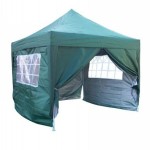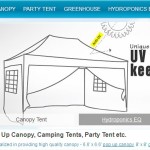Even if you’re not planning on long hikes, good footwear is still useful when camping. That footwear might be a pair of light comfy boots for local rambles, or a pair of wellies – the campers’ best friend, especially on grassy sites. Sandals or flip flops are great for popping along to the showers and easy to kick off outside the camping tent so worth having with you whether you are backpacking, touring or family camping.
Shopping, picnics and games are carried far more easily in a sturdy daysack than in plastic carrier bags. They are also very useful if you fancy a day trip somewhere during your camping trip, pack the lunch, the rain macs and the camera and away you go. Look out for easily adjustable padded shoulder straps, a light hipbelt, padded back and quick release buckles.
Holdalls are great for camping gear, clothes and personal stuff as they are light, tough, can be packed away in the car easily (don’t squash them too hard!) and have no sharp edges to catch ankles in the camping tent.
Backpackers camping each night will need larger capacity packs built to carry heavier loads and designed to cope with the weight of a camping tent or its poles and pegs comfortably.
What About Touring?
Touring isn’t just about driving all day taking in the scenery through the windscreen. Instead, the changes in location can involve walks, other activities and visits to attractions; perhaps off the cuff or planned as a theme and sorted in detail.
Nobody wants to spend loads of time pitching a large tent, sorting the camp and generally getting organised to then take it all apart in the morning, move on and repeat the process. Instead, pack a smaller tent, preferably one that can be pitched and packed away fairly quickly and easily; domes are ideal. A porch is useful for cooking and eating, and a wind shield offers extra privacy if you are planning on a camping-touring break. You might want to eat out for main meals and need only a small stove for brews and basic ‘kitchen’ gear for sandwiches and snacks.
Tough boxes are great for camping hardware such as cooking and eating gear, preferably packed in the back and easily accessed as well as items like a table, chairs, airbeds and camping tent; soft luggage is fine for clothes and toys. Sleeping bags make for great comfort cushions for passengers but aim not to have seats and floor space jammed up with gear. Clever packing means ensuring that last in is first needed on site.
Easy to access roof storage is growing in popularity as cars get smaller. Avoid the temptation to overload it and pack a few soft bags into it rather than trying to jam in one or two large heavy bags. Lining with plenty of polythene allows the contents to be well wrapped up and protected when it rains.







You must be logged in to post a comment.